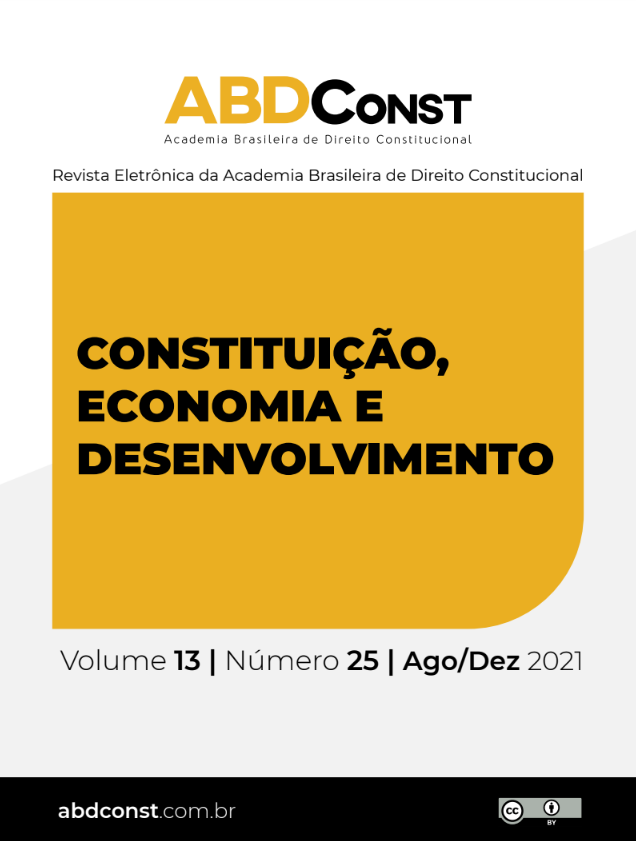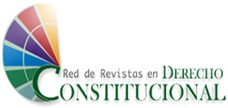GENDER PERSPECTIVE AND TRIALS BY JURIES
THE MECHANISMS OF CONTROL OF BIRTHS AND GENDER STEREOTYPES IN TRIAL BY JURIES
Palavras-chave:
TRIAL BY JURY, STEREOTYPES, BIASES, GENDER, INTEGRATION, IMPARTIALITYResumo
One of the aims of this paper is to analyze the mechanisms for controlling stereotypes and implicit gender biases in trial by jury in Argentina. Especially, we will focus on the results achieved regarding the existence of gender biases and stereotypes when exercising the jurisdictional function, as well as in the description of the control systems over them, and the measures that could be carried out to better face this kind of stereotypes and biases within this institution.
Referências
ARCE, R. (1989). Perfiles Psicosociales, Veredictos y Deliberación en Jurados Legos. Tesis Doctoral, Universidad de Santiago.
ARCE, R.; FARIÑA, F., & Real, S. (1998). Jurados: de su composición y sus efectos en la toma de decisión. Revista de Psicología Social, Sd.
ARCE, R.; FARIÑA, F., Sobral, J. (1995). Construcción estadística de perfiles predictores de sesgo en la formación de juicios. Revista de Psicología Social, 10(1), 3-16.
ARCE, R.; FARIÑA, F., Vila (1995). Perfiles psicosociales como predictores de sesgo en la toma de decisión del Jurado. Revista de Psicología Social, 10(1), 93-102.
ARCE, R.; FARIÑA, F., Vila, C. (1994a). Sobre la calidad y ubicación de las instrucciones judiciales al jurado. Revista de Psicología Social Aplicada, 4(3), 105-119.
ARCE, R.; FARIÑA, F., Vila, C. (1994b). Análisis de contenido en la interacción de jurados legos homogéneos. Análisis y Modificación de Conducta, 20(74), 817-831.
ARCE, R.; FARIÑA, F., Vila, C. (1995b). Análisis de los factores individuales y grupales explicativos de la indulgencia/rigidez de los jurados. Boletín de Psicología, 47, 103-120.
ARCE, R., FARIÑA, Fraga, I (2000), Género y formación de juicios en un caso de violación de Arce, Fariña y Fraga. Ramón Arce, Francisca Fariña y Ana Isabel Fraga Universidad de Santiago de Compostela y Universidad de VigPsicothema –, CODEN PSOTEG 2000. Vol. 12, nº 4, pp. 623-628.
ARCE, R.; FARIÑA, F. (1997). Sesgos en la formación de juicios y decisiones de los jurados: la aproximación de no modelo. En Fariña, F. y Arce, R. (Coords.), Psicología e investigación judicial (pp. 165-182). Madrid: Fundación Universidad Empresa.
ARENA, F. (2021). “Acerca de la relevancia de la investigación sobre sesgos implícitos para el control de la decisión judicial”, en Federico Arena, Pau Luque Sánchez y Diego Moreno Cruz (eds.), Razonamiento jurídico y ciencias cognitivas, Universidad Externado de Colombia, Bogotá, 2021.
ASENCIO, R. (2010). Discriminación de género en las decisiones judiciales: Justicia Penal y Violencia de Género - 1a ed. - Buenos Aires: Defensoría General de la Nación.
BIERNAT, M.; FUEGEN, K. (2001). Shifting standards and the evaluation of competence: Complexity in gender-based judgment and decision making. Journal of Social Issues, 57, 707-724.
BORNSTEIN, B.; GREENE, E. (2017). The Jury Under Fire: Myth, Controversy, and Reform. Oxford: University Press Scholarship Online.
ALENCAR, Cardoso Onofre de (2015) Mujeres y estereotipos de género en la jurisprudencia de la Corte Interamericana de Derechos Humanos, Eunomía. Revista en Cultura de la Legalidad Nº 9, octubre 2015 – marzo 2016, pp. 26-48
CARLSON, K.; RUSSO, E. (2001). Biased Interpretation of Evidence by Mock Jurors, Journal of Experimental Psychology: Applied 2001, Vol. 7, No. 2, 91-10.
COOK, R.; CUSACK, S (2010). Gender Stereotyping: Transnational Legal Perspectives. Editorial University of Pennsylvania Press.
CUSAK, Simone, (2013). Gender Stereotyping as a Human Rights Violation, Research Report, submitted to the Office of the High Commissioner for Human Rights on 14 October 2013
DAVIS, Kerr; ATKINS, Holt; MECH. The Decision Processes of 6-and 12-Person Mock Juries Assigned Unanimous and Two-Thirds Majority Rules, 32 J. of Personality & Soc. Psych. 1 (1975)
DIAMOND, S., CASPER, J., OSTERGREN, L. (1989). Blind Foldind the Jury. Law and Comtemporary Problems, 247-267.
DUNHAM, Catherine Ross (2017) “Third Generation Discrimination: The Ripple Effects of Gender Bias in the Workplace”, Akron Law Review: Vol. 51, Iss. 1, Article 2. Available at: http://ideaexchange.uakron.edu/akronlawreview/vol51/iss1/2
FRASER, N. (1999). Repensando la esfera pública: una contribución a la crítica de la democracia actualmente existente. Publicado en la Revista Ecuador Debate N. 46, Centro Andino de Acción Popular, 1999. Versión original “Habermas and the Public Sphere” fue publicada en The MIT Press, Cambridge, Massachusetts and London, England, 1992.
FRIEDMAN, Trial by Jury: Criteria for Convictions, Jury Size and Type I and Type II Errors, 26-2 Am.Stat. 21 (Apr.1972)
GARZÓN, A (1994). Sala de justicia y Jurados. Boletín de Psicología, 44, 27-56.
GARZÓN, A. (1990) Psicología y Jurados. Valencia. Promolibro.
GIANFORMAGGIO, L. (2005). Eguaglianza, donne e diritto. A. Facchi, C. Faralli, T. Pitch (eds). Il Mulino: Bologna.
GREENWALD, A. G., MCGHEE, D. E., SCHWARTZ, J. K. L., A. G. (1998). «Measuring individual differences in implicit cognition. The implicit association test». Journal of personality and Social Psychology Hans, V. P., y Vidmar, N. (1986). Judging the Jury. Nueva York: Plenum Press.
HARFUCH (2021) Acerca de la ley de juicio por jurados de la Ciudad Autónoma de Buenos Aires. Buenos Aires: Revista Erreiuson line. Recuperado dehttp://www.juicioporjurados.org/2021/10/doctrina-acerca-de-la-ley-de-jurados-de.html
HASTIE, H., PENROD, S.; PENNINGTON, N. (1983). Inside the Jury. Cambridge, Mass.: Harvard University Press.
HIGGIN BOTHAM, P.; ROSENTHAL, l.; GENSLER, S. (2020). Bringing Back the Twelve-Person Civil Jury. Revista Judicature 104, pag 47 a 59.
HOLDROY, J., Scafie, R., & Stafford, T. (2017). What is implicit bias? Philosophy Compass, 80-100. LIMA, Jairo; BUENO, Marcella Pradella; STAMILE, Natalina. (2021). “Supremas Ministras: a Inclusão de Mulheres na Composição do STF à Luz da Legitimidade das Cortes Constitucionais”, Dossiê temático “Gênero e Instituições Judiciais: conexões teóricas e práticas”, Revista Direito Público, vol. 18, n. 98, 2021, pp. 217-255.
KAHNEMAN, D. (1982). Judgment under uncertainty: Heuristics and. Cambridge: Cambridge University Press.
KAHNEMAN, D. (2013). Thinking, fast and Slow. New York.
KALAFATICH, C. (2021). Juicio por Juradxs y Género: ¿La paridad como punto de llegada o como punto de partida? en Postigo -Sucunza (comps) (2020) Juicio por Jurados en la Justicia Civil.
KANG, J., Bennet, M., CARBADO, D., CASEY, Pam; DAGUSPA, N.; LEVINGSON, J. (2012). Implicit bias in the Courtroom. Ucla Law Review, 1124-1186.
KAPLAN, M. F. (1989). Factores psicológicos en la conducta de jurados. En A. Garzón (ed.). Psicología y Justicia. Valencia: Promolibro.
KAPLAN, M. F. y Kemmerick, G. (1974). Juror Judgment as Information Integration: Combining Evidential and Non-Evidential Information. Journal of Personality and Social Psychology, 30, 493-499.
KAPLAN, M. F., y Miller, J. H. (1978). Reducing the Effects of Juror Bias. Journal of Personality and Social Psychology, 36, 1443-1455.
KAPLAN, M., y Garzón (1988) Dos alternativas de lo que la psicología puede aportar al derecho. Boletin de Psicología. 19, 1-15.
KAPLAN, M., y Garzón. (1986) Cognición Judicial. Boletin de Psicología. 10, 7-27.
Lorenzo, Leticia, (2015). “Audiencia de Selección de Jurados” en http://www.pensamientopenal. com.ar/system/files/2015/05/doctrina41128.pdf.
MARDER, N. (1987). Gender Dynamics and Jury Deliberations, The Yale Law Journal, 593-612.
MARTÍN RODRIGUEZ, A (1994). Psicología social y jurados: algunas lineas de investigación en Psicologia legal y Forense.
SAKS, Michael. (1974). Ignorance of Science is No Excuse. Trial 10.
MORRISON, M., DE VAUL-FETTERS, A.; GAWRONSKI, B. (2016). Stacking the Jury: Legal Professionals’Peremptory Challenges Reflect Jurors’ Levels of Implicit Race Bias.
Personality and Social Psychology Bulletin, 1129–1141.
NOTE, An Empirical Study of Six-and Twelve-Member Jury Decision-Making Processes, 6 U.Mich.J.L. Reform 712 (1973)
PABST, Statistical Studies of the Costs of Six-Man versus Twelve-Man Juries, 14 Wm. & Mary L.Rev 326 (1972)
PENNA, C. (2016). Audiencia de selección de jurados: repensando la imparcialidad. La ley Buenos Aires, 113.
PENNINGTON, N. (1981). Causal Reasoning and Decision Making: The Case of Juror Decisions. Tesis Doctoral, Harvard University.
PENNINGTON, N., y Hastie, R. (1986). Evidence evaluation in complex decision making. Journal of Personality and Social Psychology, 51, 242-258.
Penrod, S. (1990). Predictors of Jury Decision Making in Criminal and Civil Cases: A Field Experiment. Forensic Reports, 3, 261-277.
PHILLIPS, A. (1995). The politics of presence. Oxford: Oxford University Press.
REYES, A. (2021a) Instrucciones al jurado con perspectiva de género. Revista la Ley, suplemento Abogacía Corporativa. Tomo 2021.E (10 de septiembre de 2021).
REYES, A. (2021b) La perspectiva de género y la diversidad en la integración del jurado. Revista La Ley Ciudad Autónoma de Buenos Aires. Noviembre 2021. Número 6.pag. 1 a 5. Editorial Thompson Reuters.
SAKS (1995). The Smaller the Jury, the Greater the Unpredictability Judicature 79, pp. 236-264.
SAKS, M. y Smith, A. (2008) The Case for Overturning Williams v. Florida and the Six-person Jury: History Law and Empirical Evidence (2008).
Saks, M. (1998) What Do Jury Experiments Tell Us About How Juries (Should) Make Decisions. 6 S. Cal. Interdisc. L.J. 1
SOMMERS, S. R. (2006). On racial diversity and group decision making: Identifying multiple effects of racial composition on jury deliberations. Journal of Personality and Social Psychology, 90(4), 597–612. https://doi.org/10.107/0022-3514.90.4.597
STAFFORD, T., Holroyd, J., Scaife, & Robin. (2018). Confronting Bias in Judging: A Framework for Addressing Psychological Biases in Decision Making.
STAMILE, N., “Mucho para ganar y mucho para perder. Comentario al artículo de Torres Sánchez, Ximena. Justicia de género en el plano judicial. Análisis comparado sobre el derecho fundamental de la mujer a tomar decisiones sobre su propio cuerpo en contextos de violencia” in Revista Derecho del Estado, Universidad Externado de Colombia, n. 47, septiembre-diciembre de 2020, pp. 177-213, en https://revistaderechoestado.uexternado.edu.co/2020/12/11/mucho-para-ganar-y-mucho-para-perder/?fbclid=IwAR1Ojvb6l6K7J9pojUAbryzlNlp3rOiYZA2Mu-htTBBvIilxzzbuq4cPfUA#_ftn1, publicado el 11 de diciembre de 2020.
STAMILE, N., VILLANUEVA (2020). “Violências contra mulheres no banco dosréus: o julgamento do júri na província de Córdoba (Argentina)”, pp. 251-268 in Ana Cristina Aguilar Viana, Bárbara Mendonça Bertotti, Julia Heliodoro Souza Gitirana, Letícia Regina Camargo Kreuz, Tailaine Cristina Costa (Eds), Pesquisa, Gênero & Diversidade, vol. I, editora Íthala, Curitiba.
STAMILE, N.; VILLANUEVA, C. (2019) “Algunas reflexiones sobre el juzgamiento de la violencia contras las mujeres con perspectiva de género y los diseños procesuales penales: El caso de juicio por jurados en la provincia de Córdoba (Argentina)” en Revista IusInkarri, (8), 263-278. https://doi.org/10.31381/ius inkarri.v0i8.2733http://revistas.urp.edu.pe/index.php/Inkarri/article/view/2733/2869
SWIM, J., HYERS, L. (2009) Seximen NELSON, T.D. (ed.). Handbook of Prejudice, Stereotyping, and Discrimination. Psychology Press, Nueva York, pp
THOMAS, C. (2011). Cuando se desemascara los mitos sobre el jurado. Revista Jurídica de la Universidad de Palermo, pp. 171-190.
TORRES SÁNCHEZ, Ximena. (2020) Justicia de género en el plano judicial. Análisis comparado sobre el derecho fundamental de la mujer a tomar decisiones sobre su propio cuerpo en contextos de violencia” en Revista Derecho del Estado, Universidad Externado de Colombia, n. 47, septiembre-diciembre de 2020, pp. 177-213.
VILLANUEVA, C. (2019) “Algunos Comentarios críticos al Fallo “Casales” (Juicio por juradosen la Provinciade Neuquen) Enviada y aceptada para su publicación en la Revista Jurídica digital “elDial.” https://www.eldial.com
VILLANUEVA, C. (2019) “El diseño clásico o anglosajón de juicio por jurados y la violación del deber demotivar: Un análisis a partir de las sentencias de la Corte Interamericana de Derechos Humanos y la Corte Suprema de Justicia de la Nación.” Revista Derecho Constitucional. Universidad Blas Pascal, (1), 51-68. https://doi.org/10.37767/2683-9016(2019)004.https://revistas.ubp.edu.ar/index.php/revderconst/article/view/108
VILLANUEVA, C. (2021) Sesgos implícitos y juicios por jurados. En Prensa.









